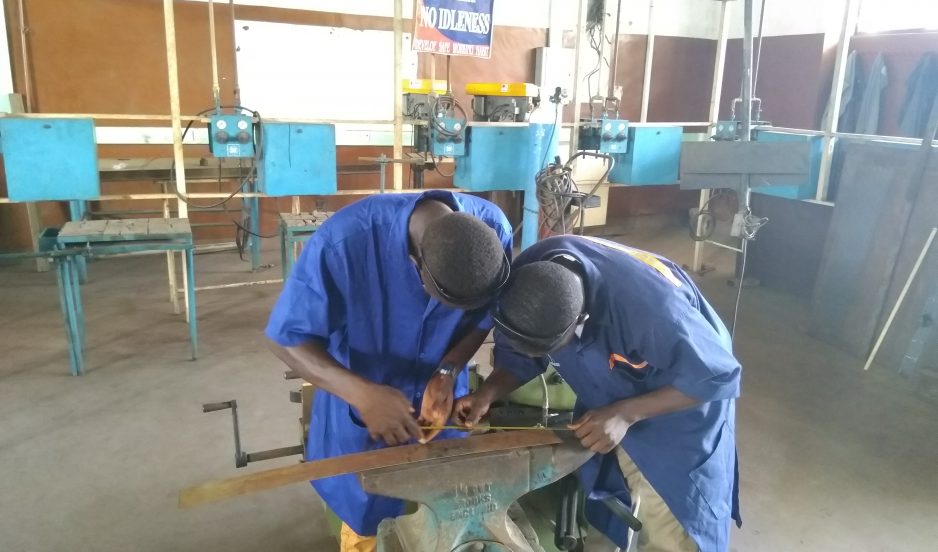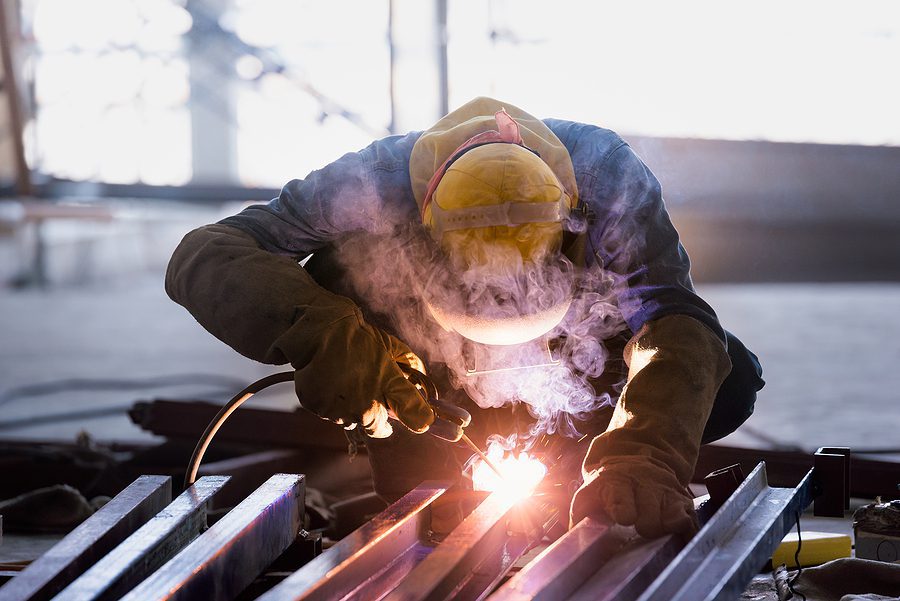Usual Welding Fixing Issues and How to Address Them Properly
Welding repairs frequently run into a series of concerns that can endanger the integrity of the final product. Common problems include inadequate infiltration, porosity, and imbalance, to name a few. Each problem presents distinct obstacles that require specific techniques for resolution. Understanding these concerns is essential for welders aiming to improve their outcomes and abilities. This conversation will check out these usual welding repair issues and reliable methods to address them.
Poor Infiltration
Insufficient penetration happens when the weld metal falls short to totally fuse with the base material, resulting in weak joints and possible structural failings. This issue usually originates from inadequate warmth input, inaccurate electrode angle, or improper welding speed. Welders might encounter inadequate penetration due to a mistake of the needed criteria for a specific material thickness or kind. Additionally, contamination on the base product's surface can hinder reliable bonding, exacerbating the trouble. To address inadequate infiltration, welders ought to assure appropriate setups on their equipment and preserve a clean work surface area. Regular evaluation of welds is suggested to determine any deficiencies early, enabling prompt corrections and the avoidance of endangered architectural stability in welded assemblies.
Porosity
Porosity is a common flaw in welded joints that materializes as little gas bubbles caught within the weld steel. This issue can endanger the stability of the weld, leading to lowered toughness and possible failure under stress. Montana Mobile Welding and Repair Belgrade Fabrication. Porosity commonly occurs from contamination, wetness, or incorrect welding strategies, which permit gases to leave right into the liquified weld pool. To attend to porosity, welders ought to assure correct surface area preparation, maintain a clean workplace, and use appropriate welding parameters. In addition, picking the right filler product and securing gas can minimize gas entrapment. Normal examination and testing of welds can aid determine porosity early, ensuring prompt rehabilitative actions are taken, thereby protecting the top quality and dependability of the bonded framework
Imbalance
Misalignment in welding can occur from different aspects, consisting of inappropriate setup and thermal growth. Comprehending the origin is crucial for reliable resolution. Numerous correction methods are offered to realign elements and assure architectural honesty.
Sources of Misalignment
Welding imbalance frequently stems from a range of underlying problems that can endanger architectural honesty. One primary cause is improper fit-up of components before welding, which can cause voids and unequal surfaces. Variations in thermal expansion during the welding procedure can also lead to distortion, specifically if the materials being joined have various coefficients of development. Additionally, poor fixturing and clamping might fail to hold elements securely in area, resulting in motion throughout welding. Badly kept tools, consisting of welding machines and devices, may present disparities in the weld grain, more contributing to imbalance. Finally, driver error, coming from not enough training or experience, can additionally play a substantial role in creating misaligned welds.
Modification Techniques Readily Available
Resolving imbalance successfully requires a mix of rehabilitative strategies tailored to the particular issues at hand. One typical technique is the usage of fixtures or jigs to hold elements in the correct setting throughout welding, ensuring constant placement. In addition, pre-heating the materials can help in reducing distortion and enhance fit-up. For considerable misalignment, mechanical realignment methods, such as utilizing hydraulic jacks or clamps, can be employed to deal with the position before welding. Post-weld warmth therapy may also be necessary to eliminate stress and anxieties triggered by misalignment. Careful examination and adjustment throughout the arrangement stage can stop misalignment problems from ending up being significant problems, advertising a smoother welding procedure and enhancing general architectural honesty.
Distortion
Distortion is a typical challenge in welding that can arise from various factors, consisting of unequal heating & cooling. Understanding the causes of distortion is vital for executing effective avoidance strategies. Addressing this problem not only improves architectural stability however additionally improves the overall top quality of the weld.
Reasons for Distortion
When based on the extreme heat of welding, products typically go through changes that can bring about distortion. This sensation primarily emerges from thermal development and tightening throughout the welding procedure. As the weld location warms up, the material broadens; upon air conditioning, it contracts, which can produce interior anxieties. On top of that, unequal heating across a work surface can worsen these tensions, causing bending or flexing. The kind of product also plays a significant role; steels with differing thermal conductivity and coefficients of expansion may respond in different ways, resulting in unforeseeable distortions. In addition, inadequate joint style and inadequate fixturing can contribute to imbalance during welding, boosting the probability redirected here of distortion. Comprehending these reasons is important for reliable welding repair and prevention methods.
Prevention Techniques
Efficient avoidance methods for distortion throughout welding focus on managing warmth input and making certain appropriate joint design. Keeping a regular warm input assists to minimize thermal development and contraction, which can result in distortion. Utilizing techniques such as pre-heating the work surface can likewise decrease the temperature level slope, promoting uniform home heating. In addition, choosing suitable joint styles, such as T-joints or lap joints, can improve security and reduce tension concentrations. Carrying out proper fixturing to protect the workpieces in location better help in keeping alignment throughout the welding process. Finally, staggered welding sequences can disperse warmth much more evenly, protecting against localized distortion. By using these approaches, welders can substantially reduce the chance of distortion and improve the total quality of their welds.
Cracking
Splitting is a typical problem come across in welding fixings, frequently arising from numerous aspects such as inappropriate air conditioning rates, material choice, or inadequate joint preparation. The event of fractures can significantly compromise the stability of the weld, leading to potential failings during procedure. To address this concern, welders should first analyze the origin, guaranteeing that products are compatible and appropriately selected for the particular application. Furthermore, managing the cooling rate throughout the welding procedure is vital; quick air conditioning can induce stress and cause splitting. Appropriate joint style and preparation additionally add to reducing the danger. Implementing these approaches can improve weld high quality and resilience, eventually lowering the possibility of splitting in finished weldments.

Incomplete Combination
A substantial issue in welding repairs is incomplete blend, which happens when the weld metal does not effectively bond with the base product or previous weld passes - Belgrade. This problem can cause weak points in the joint, possibly jeopardizing the stability of the bonded structure. Variables adding to incomplete fusion include not enough warm input, incorrect welding strategy, and contamination of the surfaces being signed up with. To resolve this concern efficiently, welders must assure correct pre-weld cleansing and surface prep work, as well as adjust their welding parameters to achieve appropriate penetration and combination. Routine assessment during the welding procedure can also help determine insufficient combination early, permitting prompt rehabilitative steps to improve the overall high quality of the weld
Overheating
While welding fixings can improve architectural integrity, overheating offers a substantial difficulty that can bring about material deterioration. Extreme heat during welding can change the mechanical homes of steels, causing lowered strength, raised brittleness, and bending. This sensation is particularly crucial in high-stress applications where structural integrity is extremely important. Determining overheating can involve aesthetic assessments for staining or distortion, in addition to monitoring temperature throughout the welding process. To alleviate the risks connected with overheating, welders ought to utilize proper methods, such as regulating heat input, adjusting travel rate, and making use of appropriate filler products. Additionally, executing pre- and post-weld heat therapies can help recover material residential properties and boost the general top quality of the fixing, making certain lasting efficiency and security.
Often Asked Concerns
What Are the Typical Indicators of a Welding Defect?

Exactly How Can I Check My Welds for High quality?
To test welds for quality, one can utilize aesthetic evaluations, ultrasonic screening, and radiographic techniques. Each method ensures Recommended Site structural honesty, identifies problems, click here to read and confirms adherence to specified criteria, eventually enhancing the reliability of the bonded joints.
What Safety and security Precautions Should I Take While Welding?
When welding, one should focus on safety by using proper individual protective equipment, ensuring correct air flow, protecting flammable products away, preserving a tidy office, and knowing environments to avoid injuries and crashes.
Can I Fix a Weld Without Redesigning the Entire Joint?
Repairing a weld without renovating the whole joint is possible, depending on the damages (Montana Mobile Welding and Repair Welding). Techniques such as grinding, adding filler product, or utilizing a welding process can effectively attend to particular flaws while preserving the bordering structure
What Devices Are Vital for Reliable Welding Repair Works?
Essential devices for reliable welding repair services consist of a welding device, cable brush, mill, protective equipment, clamps, and filler products. Each device plays a crucial function in ensuring top quality and safety throughout the repair service procedure. Porosity commonly emerges from contamination, wetness, or inappropriate welding techniques, which permit gases to run away right into the liquified weld pool. Improperly conserved devices, consisting of welding equipments and devices, might introduce disparities in the weld bead, further contributing to imbalance. When subjected to the extreme warmth of welding, products frequently undertake changes that can lead to distortion. Fracturing is an usual problem experienced in welding fixings, frequently resulting from different variables such as inappropriate air conditioning prices, material option, or inadequate joint prep work. A significant concern in welding repair work is incomplete blend, which occurs when the weld metal does not properly bond with the base product or previous weld passes.